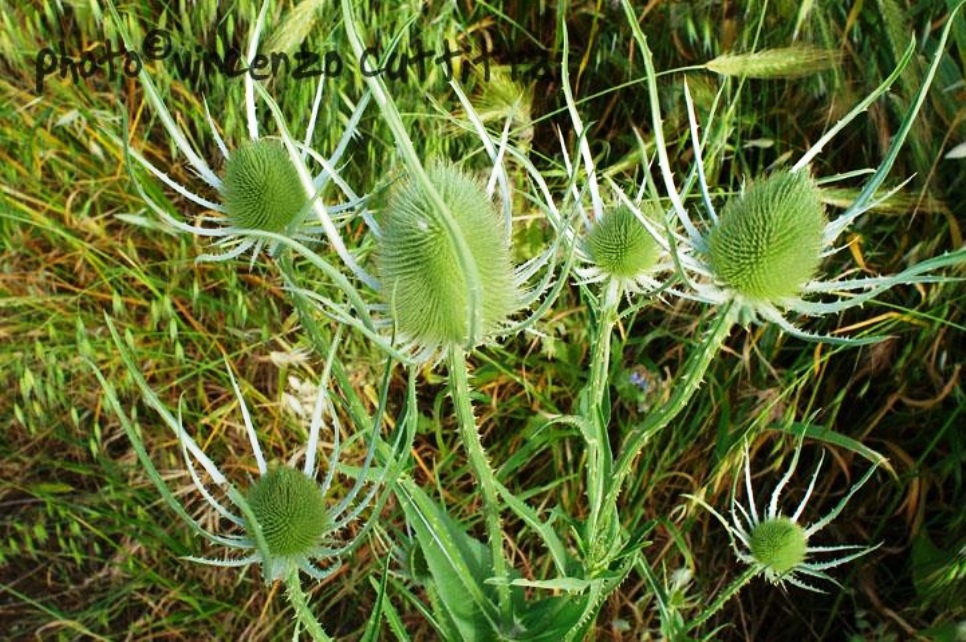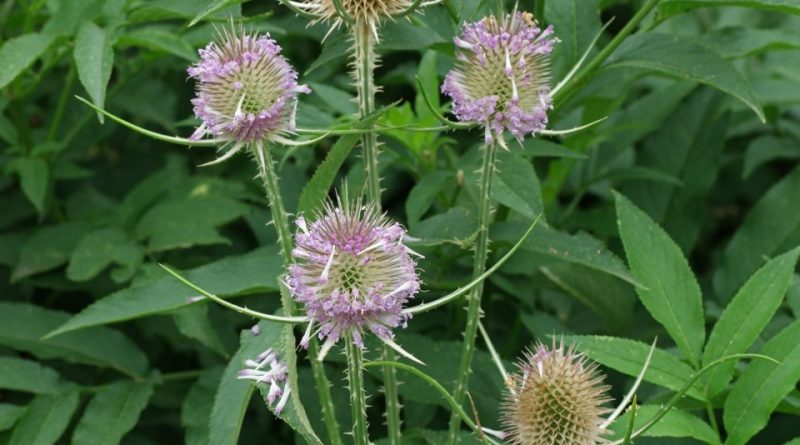Use of the Wild teasel
Use of the Wild teasel
Scientific name. Dipsacus fullonum L.
Family. Dipsacaceae
Dialect name: cirimigna, combs ri lupu
Annual herbaceous plant with multi-year root, with winter-spring vegetation characterized by woody stems sprinkled with quills. The basal leaves are arranged in a rosette and are quite large, oblong lanceolate in shape, the cauline ones are small and sprinkled with thorns. The flowers are ovoid apical heads and each flower has an aculeate bract at the base; they are small with many corollas in the same flower head and form a dirty white or light blue-purple inflorescence. The fruits are achenes. The plant blooms in the summer. It grows throughout the Mediterranean area from sea level to submontane areas, generally in marginal areas, along ditches, in uncultivated areas, in ruderal areas and in road embankments. It is harvested in spring.
Active principles
The active ingredients are found in the roots and leaves.

Property
Diuretic, purifying.
Internal use
Diuretic, purifying
Diuresis: prepare a decoction with 20 gr of root in 100 ml of water and consume one cup per
morning and one in the evening.
Depurative: prepare a decoction with 20 g of leaves in 100 ml of water and consume one cup in the morning on an empty stomach. The same decoction can be prepared with 20 grams of root, with a bitter taste, which by stimulating sweating promotes the elimination of waste.

External use
Soothing
The dry root decoction, applied as a poultice to irritated skin, acts as a soothing agent in scaling dermatoses, eczema, folliculitis, urticaria and in the treatment of psoriasis.
Maria Canzoneri

